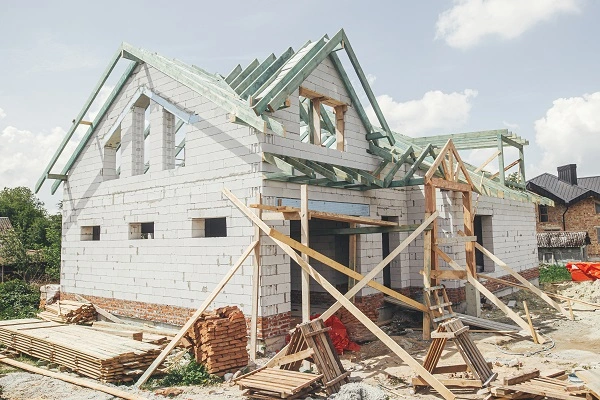The sum of money a contractor has for workers to finish a task is the labor cost. Your hourly rate is only one component of actual labor cost. Labor load is essential. The whole cost that an employee bears for the company, including payroll, benefits, taxes, workers’ compensation, insurance, employer-specific taxes (FICA), is called the labor burden.
When combined, these represent the full labor load of an employee. In construction, labor costs are frequently computed without accounting for the entire workload. We highly recommend that contractors use fully burdened labor rates to calculate labor costs.
In the construction sector, labor costs are even more crucial to total cost control than other types of businesses. Because labor rates vary based on the characteristics of a given construction project, contractors must pay close attention to labor expenses. There is no one-size-fits-all approach, and every task needs to be done carefully.
Furthermore, labor costs are ready by various methods by construction businesses. Although construction estimating software is the most effective tool for tracking and calculating labor expenses. We’ll look at a few popular techniques in the sector below.
Methods of Labor Costing
Unit Costing
To use the unit pricing approach, subcontractors divide the overall labor expenses into discrete “units,” such as hours, days, or weeks. A set cost per labor unit, such as an hourly rate or a price per square foot, is for specific work units. This will lead to a base labor rate representing the hourly cost for each worker to finish a task.
A contractor using unit pricing will multiply the hourly or unit price by the time required to do one item of work to determine labor expenses.
Despite its flaws, it’s a strategy that works well for calculating the cost of repetitive jobs.
Square Footage
As its name implies, the square foot approach is a way to estimate expenditures based on the area that has to be worked on in terms of square feet. The labor rate per square foot multiplied by the project’s total square footage is how you compute this. This entails calculating the approximate cost of labor and materials required to finish the project in a particular space and then multiplying that figure by the project’s total square footage.
Contractors that want to swiftly arrive at a ballpark estimate during the early phases of project design and wish to leverage past data prefer this strategy. Why is this information valuable? Because there is now a framework and historical data set available for forecasting labor costs for projects of this nature. As well as any future works that may be comparable.
More precise bids are the result of using this structure. Furthermore, you can use this framework to calculate the exact cost of the extra time this person takes to paint the wall in case it takes longer than five hours. This allows you to adjust the project’s expenses in other areas.
The two-rule
The rule of two aims to determine the labor and material costs by first calculating the entire project cost. Which is then divided by two to get an approximate labor cost estimate.
This strategy is predicated on the idea that labor accounts for 50% of overall project expenses, and it disregards actual costs in favor of experienced-based estimations of how long a project should take from a contractor.
The rule of two gets its name because you may arrive at an introductory cost calculation for the project after labor costs and by multiplying that amount by two.
The rule of two is unquestionably a quick method to get a basic estimate. Still, it ignores several subtle aspects of project costs, doesn’t represent actual or historical project prices, and isn’t a practical approach to account for cash flow needs if costs vary throughout a project.
How To Figure Up Labor Costs
Determining The Base Rate
Establishing a base rate involves laying down fundamental labor expenses per hour. Most of this will lead to the deconstruction of hourly or role-specific compensation.
Calculating The Labor Load
Perhaps the most crucial stage in establishing precise labor costs in construction is accounting for labor stress. Contractors will overstate their profit on each task if they don’t clearly understand the whole labor cost. Fortunately, all it takes to account for labor load is knowing where to search for the correct data.
Burden expenses consist of:
- FICA: Federal Insurance Contribution
- Vision, dental, and other benefits
- Retirement allocation
- Workers’ compensation
Payroll reports should be consulted to get all of this data. These reports are perfect for this as they will feature simply hourly salaries.
Calculating The Labor Rate
Calculating labor rate involves adding up each worker’s hourly wage and then multiplying that total by the labor load and markup.
Accurately estimating the labor costs for construction
Using all the data above will now be the key to accurately calculating labor expenses. Multiply the total hours worked by the hourly wage (labor burden included) for every employee.
Calculating, tracking, and arranging labor expenses by hand is difficult. Accurate labor cost tracking requires the use of construction management software. Contractors may use our construction estimating services to include their crew’s pay and labor load. Ensuring their complete labor cost is ready each time someone checks in and out.
Closing Remarks
As material expenses are essential to every construction firm, so are labor costs. Almost 40% of the project’s budget is these expenses. Thus, a contractor requires precise estimates to avoid unpleasant surprises. Calculating total labor costs requires figuring out introductory labor rates and factoring in labor burden, benefits, and overheads. Because they automate most of the procedures, online tools are helpful when assessing labor expenses.




